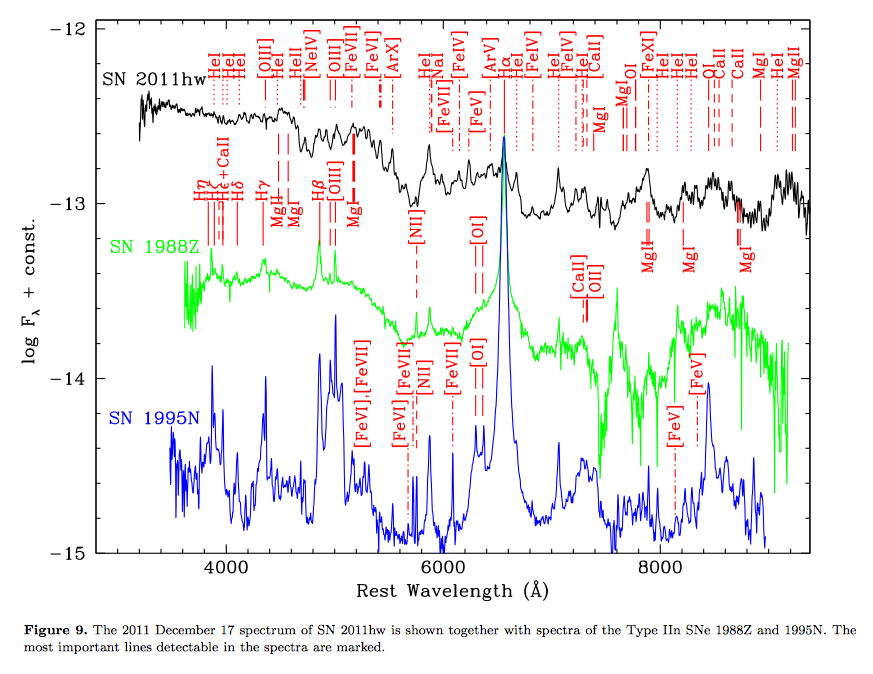Padova-Asiago Supernova Group
Highlights
Massive stars exploding in a He-rich circumstellar medium. IV. Transitional Type Ibn Supernovae
Pastorello, A. et al. 2015, MNRAS 449, 1921 (link to pdf)
We present ultraviolet, optical and near-infrared data of the Type Ibn supernovae (SNe) 2010al and 2011hw. SN 2010al reaches an absolute magnitude at peak of M(R) = -18.86 +- 0.21. Its early light curve shows similarities with normal SNe Ib, with a rise to maximum slower than most SNe Ibn. The spectra are dominated by a blue continuum at early stages, with narrow P-Cygni He I lines indicating the presence of a slow-moving, He-rich circumstellar medium. At later epochs the spectra well match those of the prototypical SN Ibn 2006jc, although the broader lines suggest that a significant amount of He was still present in the stellar envelope at the time of the explosion. SN 2011hw is somewhat different. It was discovered after the first maximum, but the light curve shows a double-peak. The absolute magnitude at discovery is similar to that of the second peak (M(R) = -18.59 +- 0.25), and slightly fainter than the average of SNe Ibn. Though the spectra of SN 2011hw are similar to those of SN 2006jc, coronal lines and narrow Balmer lines are cleary detected. This indicates substantial interaction of the SN ejecta with He-rich, but not H-free, circumstellar material. The spectra of SN 2011hw suggest that it is a transitional SN Ibn/IIn event similar to SN 2005la. While for SN 2010al the spectro-photometric evolution favours a H-deprived Wolf-Rayet progenitor (of WN-type), we agree with the conclusion of Smith et al. (2012) that the precursor of SN 2011hw was likely in transition from a luminous blue variable to an early Wolf-Rayet (Ofpe/WN9) stage. 32
